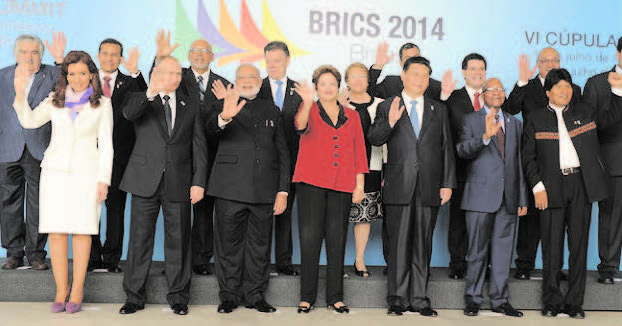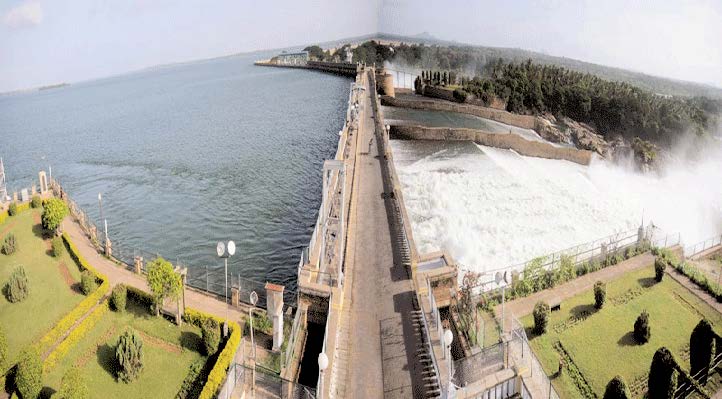
This weekend will see Prime Minister Narendra Modi and his foreign policy team undertake a complex and significant man oeuvre. This comes at a time when relations with Pakistan have discovered a new trough, the SAARC grouping is gasping for breath, the Chinese continue to demonstrate obstinate determination to hurt, harm and impede India on multiple fronts and the relationship with Russia is in dire need of resuscitation.
The annual BRICS (Brazil, Russia, India, China and South Africa) summit in Goa on October 15-16 is undeniably the main course but hidden in the main course is a set of ingredients with an independent chemistry, the IBSA (India, Brazil and South Africa), along with the plat d’accompagnement, BIMSTEC (Bay of Bengal Initiative for Multi-Sectoral Technical and Economic Cooperation), that has as much potential as the main course. South Block will need to use this opportunity to respond to the current realities in India’s north and west, even as it consolidates India’s diplomatic push east and south, while opening new avenues for engaging its western partners in innovative ways.
The American factor
Even a cursory reading of India’s foreign policy under Mr. Modi reveals an unmistakable shift of its locus westward. A concrete manifestation of this shift is the vigorous engagement with the U.S. on defense, counterterrorism, as well on global-commons issues such as climate change. Both countries find themselves now (more often than not) speaking in the same voice, articulating the same objectives, and confronting similar challenges, be it the rise of Islamist terror or Chinese ambivalence towards a rules-based order.
Arguably and beyond the ‘values’ discourse, this deep engagement with the geographical west is a lynchpin of the Indian strategy towards being a putative great power seeking to shape international norms in the 21st century. Even so, it cannot and should not disengage with other powers such as China and Russia, howsoever different their value systems may appear today. They are in one instance a large neighbor with historical antipathy, and in the other India’s only resort to strategic arsenals and high technology pursuits.
There is also genuine convergence in certain areas – such as non-interventionism and on political-economy issues, between India and China and India and Russia. In the case of China, the tyranny of bilateral disputes (mostly on the strategic side) has prevented both countries from exploring much common ground. And with Russia, the U.S.-India entente is being understood by Moscow as a substantial shift in the intent of India towards the bilateral relationship. In fact, there seems to have been a serious underestimation in both capitals of the drift in the India-Russia relationship. Perhaps the Uri terror attack was an important moment for both to realize that extent.
This is where BRICS comes in. Through the presence of two other actors, Brazil and South Africa, not party to complicated triangular geopolitical dynamics, India in BRICS seeks to downplay its bilateral disputes with China and engage with it on issues where there is space for beneficial cooperation. The China relationship today is heading south, and with effort, it may at best become a well-managed one. With Russia on the other hand, India needs to use this summit meet and the BRICS engagement to reclaim its traditional space and reassure the Kremlin that Moscow is India’s foremost global partner.
The decision to invite BIMSTEC countries, in place of SAARC, to the BRICS summit is clearly a decision that relocates India’s ‘neighborhood first’ policy to its east. With this decision, Mr. Modi seeks to bring his neighborhood policy, India’s ‘act east’ policy, and its global governance goals, engaged with through the BRICS, in sync with each other. Brazil, Russia and South Africa have very limited in-roads into the Bay of Bengal littorals and may discover merit in engaging with this community. By playing the role of a ‘sincere interlocutor’ between BRICS and BIMSTEC, India stands to gain influence in both (despite China’s growing presence) as a benign transcontinental bridge.
The IBSA potential
This BRICS summit will also be an occasion for the three democracies in that grouping to meet on the sidelines and plot their future course. IBSA is in many ways more organic than BRICS. Beyond the shared commitment to democracy, the three countries are truly southern and developing economies and have the potential to emerge as a marquee example of south-south cooperation of emerging liberal economies across three continents. Without the presence of two military/economic behemoths, IBSA is a grouping of equals, more than BRICS can ever be. However, IBSA, it seems, struggles to excite either South Africa or Brazil, who feel sated in the presence of China and Russia at the BRICS.
This can be changed. Going forward, IBSA should engage with both the U.S. and one European power, like Germany, to promote a true concert of democracies across each continent, bringing advanced economies alongside emerging ones. At a time when illiberal impulses are in ascendancy, IBSA in tandem with the U.S. and the sole resurgent European power, Germany, can emerge as strong defenders of the rules-based open order across political and economic spaces.
Brazil and South Africa have had differences with China in the past over Beijing’s heavy-handed economic policies. Brazil, under its new president Michel Temer, wants to pivot back to its traditional economic partners, the U.S. in particular. This bodes well for IBSA to emerge as a liberal bridge between the north and the south. Put differently, the antidote to the common (if somewhat misplaced) perception of BRICS as a pawn in the grand strategy of China and Russia lies within BRICS itself, the IBSA. Along with BIMSTEC, IBSA points to the multiple collateral possibilities at Goa, and to a new moment that may see recalibration of Indian foreign policy.
(The authors- Samir Saran is Vice President, and Abhijnan Rej is a Fellow, at the Observer Research Foundation, New Delhi)





Be the first to comment